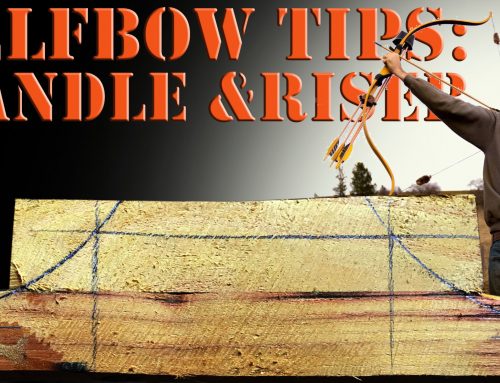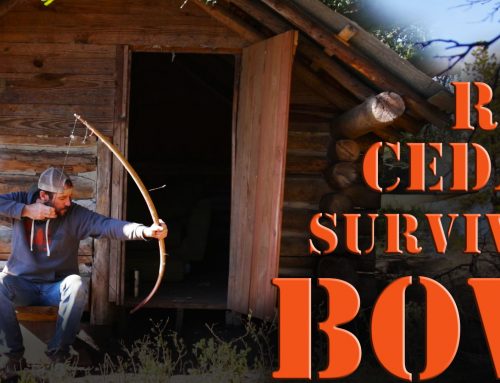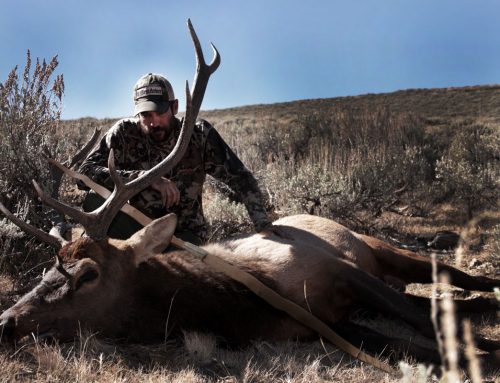[fusion_builder_container hundred_percent=”no” hundred_percent_height=”no” hundred_percent_height_scroll=”no” hundred_percent_height_center_content=”yes” equal_height_columns=”no” menu_anchor=”” hide_on_mobile=”small-visibility,medium-visibility,large-visibility” class=”” id=”” background_color=”” background_image=”” background_position=”center center” background_repeat=”no-repeat” fade=”no” background_parallax=”none” enable_mobile=”no” parallax_speed=”0.3″ video_mp4=”” video_webm=”” video_ogv=”” video_url=”” video_aspect_ratio=”16:9″ video_loop=”yes” video_mute=”yes” video_preview_image=”” border_size=”” border_color=”” border_style=”solid” margin_top=”” margin_bottom=”” padding_top=”” padding_right=”” padding_bottom=”” padding_left=””][fusion_builder_row][fusion_builder_column type=”1_3″ layout=”1_3″ spacing=”” center_content=”no” link=”” target=”_self” min_height=”” hide_on_mobile=”small-visibility,medium-visibility,large-visibility” class=”” id=”” background_color=”” background_image=”” background_position=”left top” background_repeat=”no-repeat” hover_type=”none” border_size=”0″ border_color=”” border_style=”solid” border_position=”all” padding_top=”” padding_right=”” padding_bottom=”” padding_left=”” dimension_margin=”” animation_type=”” animation_direction=”left” animation_speed=”0.3″ animation_offset=”” last=”no”][fusion_text]
I get a lot of questions from beginning bowyers looking for an osage stave for their first bow. Although I’m happy to point them in the right direction, I always try to direct beginners toward wood that they have locally and that they can harvest themselves. In the eastern US, there are many species of white woods that will make excellent primitive bows. This video is part of an online bow building course I’ve been working on. It will take you thorough the process of removing the bark and cambium to prepare the back for this hickory self bow. Once the back is prepared, I’ll show you how I lay out a bow with straight grain, which is a little different from how I normally do it.
A hickory self bow is a great place to start the bow building journey. Hickory is readily available, nearly indestructible, and very forgiving as a bow wood. Although this stave is well seasoned, hickory is one species that will allow you to rough out a bow from a green stave without too many drying cracks. So, if you’re raring to go, you can go out and harvest a hickory tree today and have a finished bow in under two months! For the best performance, you’ll want to drive the moisture content down pretty low though but I’ll cover that in future videos on the patreon site. There’s already some great content over there so check that out if you haven’t already.
As mentioned, hickory is just one of the commonly available options we have for bow building. There are dozens of species of north American hardwoods that will make great bows and many of them are covered in the Traditional Bowyer’s Handbook.
[/fusion_text][/fusion_builder_column][fusion_builder_column type=”2_3″ layout=”2_3″ spacing=”” center_content=”no” link=”” target=”_self” min_height=”” hide_on_mobile=”small-visibility,medium-visibility,large-visibility” class=”” id=”” background_color=”” background_image=”” background_position=”left top” background_repeat=”no-repeat” hover_type=”none” border_size=”0″ border_color=”” border_style=”solid” border_position=”all” padding_top=”” padding_right=”” padding_bottom=”” padding_left=”” dimension_margin=”” animation_type=”” animation_direction=”left” animation_speed=”0.3″ animation_offset=”” last=”no”][fusion_youtube id=”https://www.youtube.com/watch?v=IRFZErhTkec” alignment=”” width=”” height=”” autoplay=”false” api_params=”” hide_on_mobile=”small-visibility,medium-visibility,large-visibility” class=”” /][fusion_products_slider picture_size=”fixed” cat_slug=”” number_posts=”5″ carousel_layout=”title_on_rollover” autoplay=”no” columns=”5″ column_spacing=”” scroll_items=”” show_nav=”yes” mouse_scroll=”no” show_cats=”yes” show_price=”yes” show_buttons=”yes” hide_on_mobile=”small-visibility,medium-visibility,large-visibility” class=”” id=”” /][/fusion_builder_column][/fusion_builder_row][/fusion_builder_container][fusion_builder_container hundred_percent=”no” hundred_percent_height=”no” hundred_percent_height_scroll=”no” hundred_percent_height_center_content=”yes” equal_height_columns=”no” menu_anchor=”” hide_on_mobile=”small-visibility,medium-visibility,large-visibility” class=”” id=”” background_color=”” background_image=”” background_position=”center center” background_repeat=”no-repeat” fade=”no” background_parallax=”none” enable_mobile=”no” parallax_speed=”0.3″ video_mp4=”” video_webm=”” video_ogv=”” video_url=”” video_aspect_ratio=”16:9″ video_loop=”yes” video_mute=”yes” video_preview_image=”” border_size=”” border_color=”” border_style=”solid” margin_top=”” margin_bottom=”” padding_top=”” padding_right=”” padding_bottom=”” padding_left=””][fusion_builder_row][fusion_builder_column type=”1_4″ layout=”1_4″ spacing=”” center_content=”no” link=”” target=”_self” min_height=”” hide_on_mobile=”small-visibility,medium-visibility,large-visibility” class=”” id=”” background_color=”” background_image=”” background_position=”left top” undefined=”” background_repeat=”no-repeat” hover_type=”none” border_size=”0″ border_color=”” border_style=”solid” border_position=”all” padding_top=”” padding_right=”” padding_bottom=”” padding_left=”” margin_top=”” margin_bottom=”” animation_type=”” animation_direction=”left” animation_speed=”0.3″ animation_offset=”” last=”no”][fusion_imageframe image_id=”12481″ style_type=”none” stylecolor=”” hover_type=”none” bordersize=”” bordercolor=”” borderradius=”” align=”none” lightbox=”no” gallery_id=”” lightbox_image=”” alt=”” link=”http://www.vortexoptics.com/” linktarget=”_blank” hide_on_mobile=”small-visibility,medium-visibility,large-visibility” class=”” id=”” animation_type=”” animation_direction=”left” animation_speed=”0.3″ animation_offset=””]https://www.twistedstave.com/wp-content/uploads/vortex-300×109.png[/fusion_imageframe][/fusion_builder_column][fusion_builder_column type=”1_5″ layout=”1_5″ spacing=”” center_content=”no” link=”” target=”_blank” min_height=”” hide_on_mobile=”small-visibility,medium-visibility,large-visibility” class=”” id=”” background_color=”” background_image=”” background_position=”left top” undefined=”” background_repeat=”no-repeat” hover_type=”none” border_size=”0″ border_color=”” border_style=”solid” border_position=”all” padding_top=”” padding_right=”” padding_bottom=”” padding_left=”” margin_top=”” margin_bottom=”” animation_type=”” animation_direction=”left” animation_speed=”0.3″ animation_offset=”” last=”no”][fusion_imageframe image_id=”12479″ style_type=”none” stylecolor=”” hover_type=”none” bordersize=”” bordercolor=”” borderradius=”” align=”none” lightbox=”no” gallery_id=”” lightbox_image=”” alt=”” link=”https://orioncoolers.com/” linktarget=”_blank” hide_on_mobile=”small-visibility,medium-visibility,large-visibility” class=”” id=”” animation_type=”” animation_direction=”left” animation_speed=”0.3″ animation_offset=””]https://www.twistedstave.com/wp-content/uploads/Orion-Coolers-logo-300×209.png[/fusion_imageframe][/fusion_builder_column][fusion_builder_column type=”1_5″ layout=”1_5″ spacing=”” center_content=”no” link=”” target=”_self” min_height=”” hide_on_mobile=”small-visibility,medium-visibility,large-visibility” class=”” id=”” background_color=”” background_image=”” background_position=”left top” background_repeat=”no-repeat” hover_type=”none” border_size=”0″ border_color=”” border_style=”solid” border_position=”all” padding_top=”” padding_right=”” padding_bottom=”” padding_left=”” dimension_margin=”” animation_type=”” animation_direction=”left” animation_speed=”0.3″ animation_offset=”” last=”no”][fusion_imageframe image_id=”12482″ style_type=”none” stylecolor=”” hover_type=”none” bordersize=”” bordercolor=”” borderradius=”” align=”none” lightbox=”no” gallery_id=”” lightbox_image=”” alt=”” link=”https://eclipsebroadheads.com/” linktarget=”_blank” hide_on_mobile=”small-visibility,medium-visibility,large-visibility” class=”” id=”” animation_type=”” animation_direction=”left” animation_speed=”0.3″ animation_offset=””]https://www.twistedstave.com/wp-content/uploads/werewolflogofinalRGB-300×300.png[/fusion_imageframe][/fusion_builder_column][fusion_builder_column type=”1_6″ layout=”1_6″ spacing=”” center_content=”no” link=”” target=”_self” min_height=”” hide_on_mobile=”small-visibility,medium-visibility,large-visibility” class=”” id=”” background_color=”” background_image=”” background_position=”left top” background_repeat=”no-repeat” hover_type=”none” border_size=”0″ border_color=”” border_style=”solid” border_position=”all” padding_top=”” padding_right=”” padding_bottom=”” padding_left=”” dimension_margin=”” animation_type=”” animation_direction=”left” animation_speed=”0.3″ animation_offset=”” last=”no”][fusion_imageframe image_id=”12478″ style_type=”none” stylecolor=”” hover_type=”none” bordersize=”” bordercolor=”” borderradius=”” align=”none” lightbox=”no” gallery_id=”” lightbox_image=”” alt=”” link=”https://www.comptontraditionalbowhunters.com/” linktarget=”_blank” hide_on_mobile=”small-visibility,medium-visibility,large-visibility” class=”” id=”” animation_type=”” animation_direction=”left” animation_speed=”0.3″ animation_offset=””]https://www.twistedstave.com/wp-content/uploads/image001.png[/fusion_imageframe][/fusion_builder_column][fusion_builder_column type=”1_4″ layout=”1_4″ spacing=”” center_content=”no” link=”” target=”_self” min_height=”” hide_on_mobile=”small-visibility,medium-visibility,large-visibility” class=”” id=”” background_color=”” background_image=”” background_position=”left top” background_repeat=”no-repeat” hover_type=”none” border_size=”0″ border_color=”” border_style=”solid” border_position=”all” padding_top=”” padding_right=”” padding_bottom=”” padding_left=”” dimension_margin=”” animation_type=”” animation_direction=”left” animation_speed=”0.3″ animation_offset=”” last=”no”][fusion_imageframe image_id=”12587″ style_type=”none” stylecolor=”” hover_type=”none” bordersize=”” bordercolor=”” borderradius=”” align=”none” lightbox=”no” gallery_id=”” lightbox_image=”” alt=”” link=”https://www.3riversarchery.com/” linktarget=”_self” hide_on_mobile=”small-visibility,medium-visibility,large-visibility” class=”” id=”” animation_type=”” animation_direction=”left” animation_speed=”0.3″ animation_offset=””]https://www.twistedstave.com/wp-content/uploads/3Rivers-Archery-Logo-300×69.png[/fusion_imageframe][/fusion_builder_column][fusion_builder_column type=”1_4″ layout=”1_4″ spacing=”” center_content=”no” link=”” target=”_self” min_height=”” hide_on_mobile=”small-visibility,medium-visibility,large-visibility” class=”” id=”” background_color=”” background_image=”” background_position=”left top” background_repeat=”no-repeat” hover_type=”none” border_size=”0″ border_color=”” border_style=”solid” border_position=”all” padding_top=”” padding_right=”” padding_bottom=”” padding_left=”” dimension_margin=”” animation_type=”” animation_direction=”left” animation_speed=”0.3″ animation_offset=”” last=”no”][fusion_imageframe image_id=”820″ style_type=”none” stylecolor=”” hover_type=”none” bordersize=”” bordercolor=”” borderradius=”” align=”none” lightbox=”no” gallery_id=”” lightbox_image=”” alt=”” link=”https://seekoutside.com/” linktarget=”_blank” hide_on_mobile=”small-visibility,medium-visibility,large-visibility” class=”” id=”” animation_type=”” animation_direction=”left” animation_speed=”0.3″ animation_offset=””]https://www.twistedstave.com/wp-content/uploads/seekoutside-300×82.png[/fusion_imageframe][/fusion_builder_column][fusion_builder_column type=”1_4″ layout=”1_4″ spacing=”” center_content=”no” link=”” target=”_self” min_height=”” hide_on_mobile=”small-visibility,medium-visibility,large-visibility” class=”” id=”” background_color=”” background_image=”” background_position=”left top” background_repeat=”no-repeat” hover_type=”none” border_size=”0″ border_color=”” border_style=”solid” border_position=”all” padding_top=”” padding_right=”” padding_bottom=”” padding_left=”” dimension_margin=”” animation_type=”” animation_direction=”left” animation_speed=”0.3″ animation_offset=”” last=”no”][fusion_imageframe image_id=”12486″ style_type=”none” stylecolor=”” hover_type=”none” bordersize=”” bordercolor=”” borderradius=”” align=”none” lightbox=”no” gallery_id=”” lightbox_image=”” alt=”” link=”http://tradbow.com/” linktarget=”_blank” hide_on_mobile=”small-visibility,medium-visibility,large-visibility” class=”” id=”” animation_type=”” animation_direction=”left” animation_speed=”0.3″ animation_offset=””]https://www.twistedstave.com/wp-content/uploads/TBM-Final-Logo®-02-300×109.png[/fusion_imageframe][/fusion_builder_column][/fusion_builder_row][/fusion_builder_container]





I’d love to know more about white woods available elsewhere that are make good staves. I’m in NW Montana, where Osage, hickory, and other commonly referred to bow woods aren’t native and readily available.
Love your video’s Mr. Hayes!
Some of that is covered in my book. Serviceberry, hawthorn, apple, chokecherry. They’ll all make bows.
Have you ever built a bow out of dogwood. I live in North Central Kentucky and the dogwood is very common here in good bow stave size. I know from past experience how resilient the wood is.
Hi James, I’ve never worked with dogwood but Ryan Gill has some experience. He wrote a small section in my book about using it for bows.
Clay,
Is shagbark hickory as good as any other hickory?
We have a lot of it here in Tennessee.
Hi David, I’ve only ever used the tight barked varieties like pignut. I’m not sure how shagbark would perform. But, if you have plenty of it you may as well give it a try. Even if if doesn’t make a great bow you’re bound to learn something.
ch
I have heard shagbark is THE hickory to use for selfbows.
I’ve only ever used the tight barked varieties like pignut.
Ive got a shag bark log been sitting right where it fell since last year. Cut it too make a bow (failed on the staves i split) would it be worth trying again with the log thats been sitting? Cut it way longer than would be needed for a bow so wasnt sure if checking would still be an issue if i cut the ends off before splitting? Otherwise its gonna be good firewood. But before i cut it up for that i thought itd be worth asking atleast..
If the wood is still sound it’d be fine. But I’m not sure with it sitting out that long.
Thanks for the reply man. I guess ill quater it up and find out lol. Worst that can happen is i quater it and the wood is no good and gets turned into fire wood anyways.
Thanks for all the great info and help Clay. I’m brand new to self bows, and took down a hickory on my property. Split it into 8ths and a few of them naturally shed their bark – unfortunately those pieces are showing a lot of vertical drying cracks on the bow-back side. Are these staves salvageable/usable? Should I coat them in something? Appreciate any advice!
Hi Sammy, if the drying cracks aren’t too big or deep you can likely just fill them with titebond wood glue and they’ll be fine.